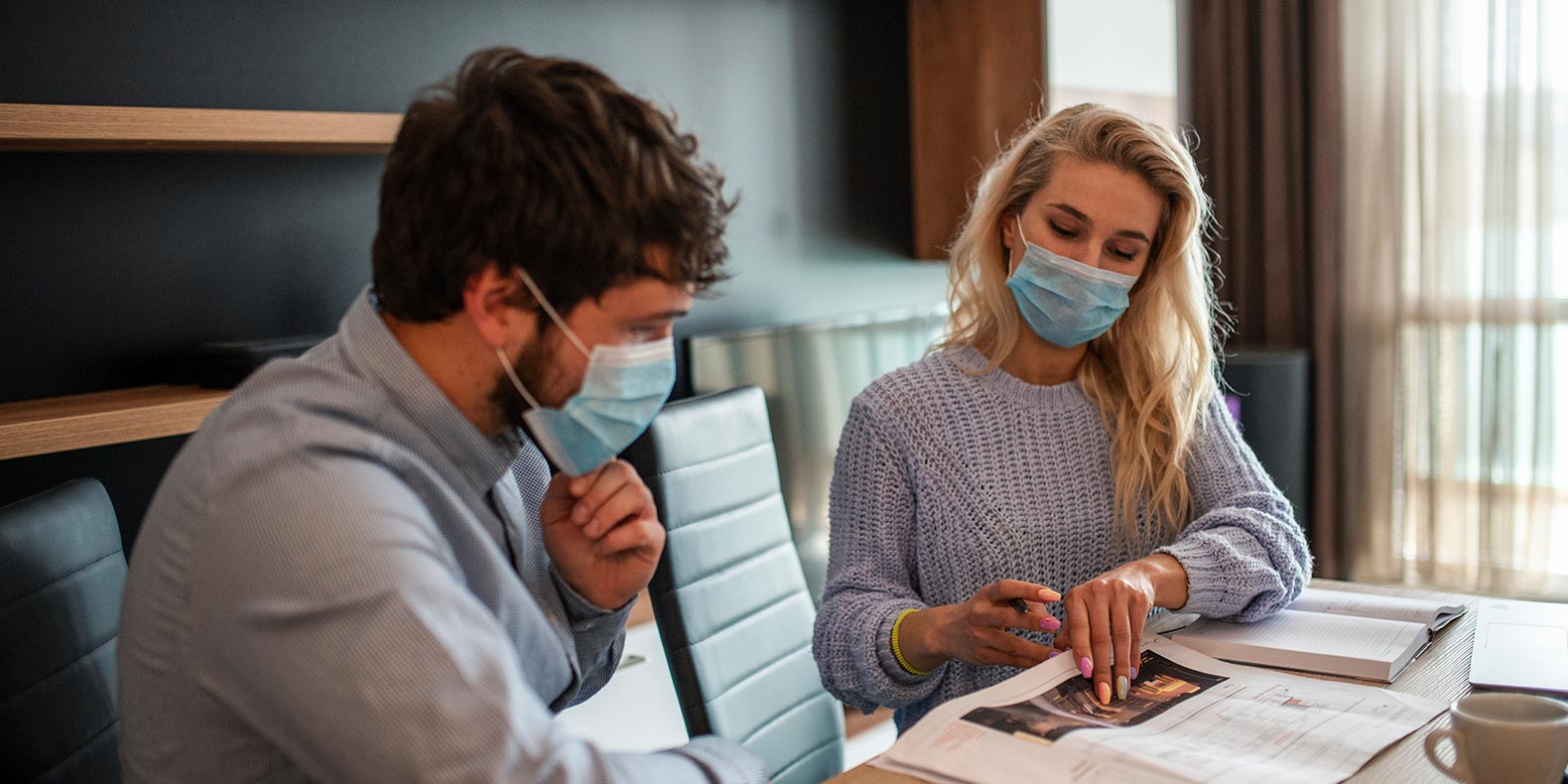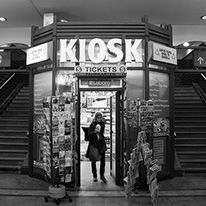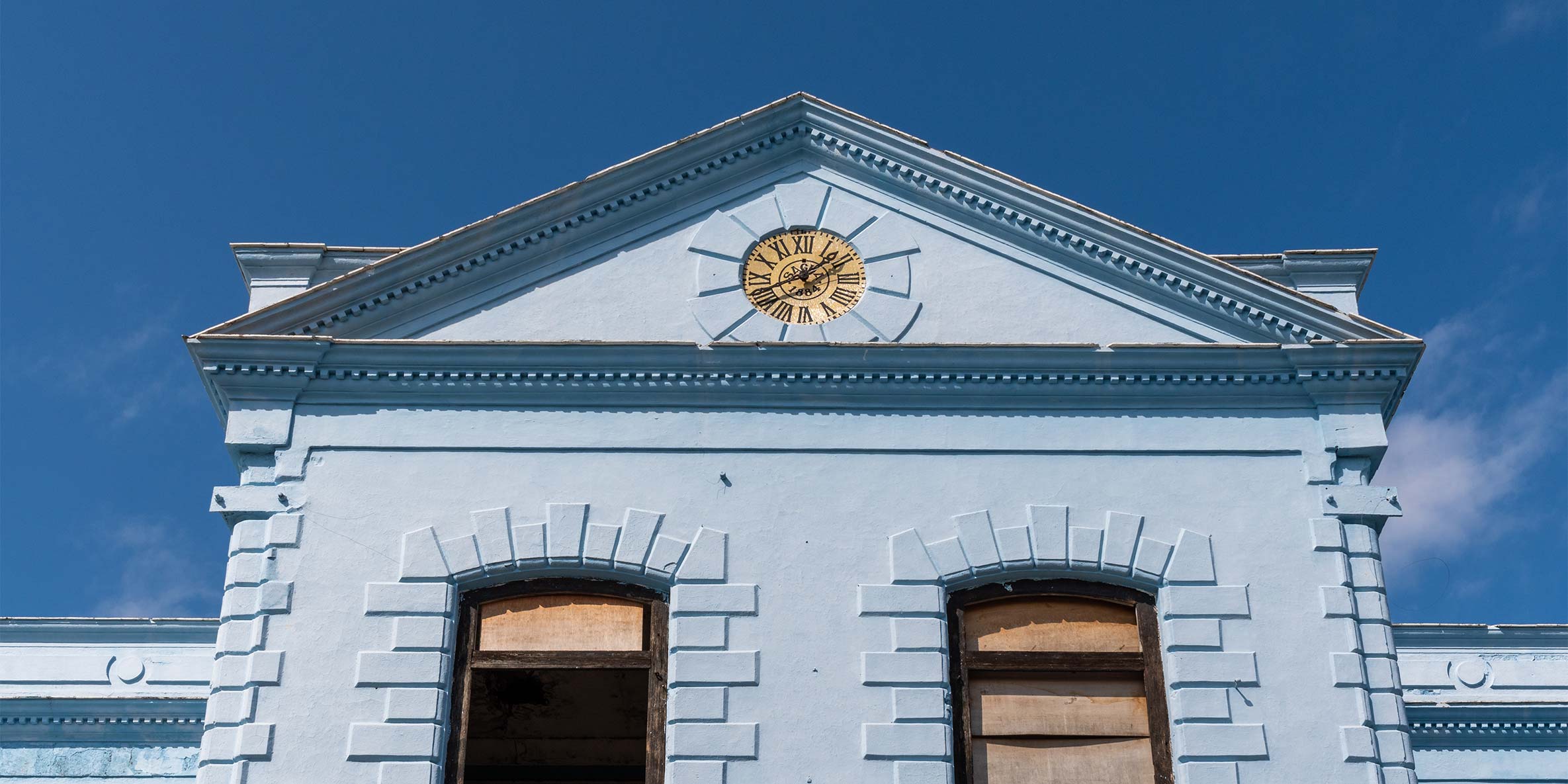The COVID-19 pandemic left virtually no industry, sector or community untouched. Since March 2020, organizations and individuals alike have grappled with living with the virus, while trying to maintain some semblance of normalcy. Many have achieved this by adopting or updating security solutions to slow the spread.
But for many Americans, COVID-19 continues to have a profound impact on how they exercise their faith and gather with their religious communities. Places of worship have been forced to close for weeks or months to ease the virus’ spread.
Last spring, the CDC released a report that highlighted just how easily the virus can spread from one person to another during church events. The high attack rate illuminated the dangers of large gatherings—no matter the reason. Churches, mosques, synagogues and other places of worship can be some of the most dangerous settings for contracting the virus: tightly packed rooms with little air circulation, singing, close conversations and physical contact make places of worship especially susceptible to “super spreader” scenarios.
This has had a profound impact on attendance numbers. Practicing one’s faith with others in their religious community has always been a cornerstone of faith groups’ foundations, and COVID has called into question how the faithful can gather during these unprecedented times.
Still, Pew Research found in August that more than half (55%) of all religious congregations were operating over the summer under some form of COVID-19 guidelines, signaling that many faith communities were determined to worship together, albeit in a safer manner. Many churches, mosques and synagogues began holding tele-church services, with limited numbers entering sacred spaces while entire congregations watched in the safety of their homes.
However, the same survey found that six percent of places of worship were holding services just as they did prior to the pandemic. While these congregations are in the minority, the virus’ contagiousness makes them especially vulnerable to outbreaks, which can then be easily spread to those they interact without outside of their religious communities.
For faith leaders and their congregations alike, the question has become: Can we safely hold services in our place of worship, even with limited capacity?
While this remains the most pressing question faith leaders face, there are other safety considerations they must address to remain aligned with the CDC’s recommendations for communities of faith.
Each congregation will likely go about providing safe religious spaces a bit differently than the next. But the good news is that they have several security options to keep members and guests safe. Here’s how your business security solutions can help your religious community remain safe during the pandemic.
Ensure Safe Entry for Your Congregation
For those of faith, places of worship have been a spiritual refuge throughout the pandemic. But inside the walls of these sacred spaces, the virus, too, has found an accommodating environment. Faith leaders across all religions must do what they can to protect those who choose to attend services.
But following the CDC’s guidelines has proven difficult for some. For others, those guidelines are not enough. That’s where additional security solutions come into play.
Places of worship are not entirely dissimilar to businesses in that they must implement safety measures to keep infected members out to and groups small. Some churches, mosques, synagogues, and other spaces have begun:
- Holding multiple services per day with limited attendance at each service.
- Halting events outside of normal days of worship, like dinners, community events and counseling services.
- Requiring all members to keep masks and other protective facial equipment on during worship services.
- Spacing out pews and seats to accommodate smaller crowds and maintain social distancing guidelines.
- Installing partitions between seats, booths or other areas where people may not be able to remain six feet or more apart.
Additional Security Solutions to Prevent the Spread
While these strategies have proven effective, they are not without their limitations. Faith leaders and those responsible for managing places of worship can take more robust approaches to keep their congregations safe.
Biometric Access Control
While it may sound foreign for faith leaders to turn to this security solution, biometric access control adds an elevated level of security to places of worship. While most services are held only once or twice per week, that doesn’t mean places of worship are open only during these times.
Members of many religions come to their sacred spaces during the week to pray, attend meetings, practice with a choir or band, or attend counseling sessions with faith leaders. These events mean that the spaces are routinely hosting people, and potentially providing space for the virus to spread.
Limiting, canceling or moving these events online when possible slows the spread. But for those who must enter the church during the week, places of worship can ensure only a limited number and a selected few can enter at certain times.
Biometric access control allows only approved entry by recognizing an individual’s physical features, including:
- Facial features
- Iris and retinal information
- And voice recognition
These measures are just as much for the safety of the congregation as they are for non-members who enter the space, like delivery people, cleaning personnel and others.
With biometric access control, faith leaders can control who is coming and going, limit visitations times and plan for disinfection after people use the space.
Contactless Entry
Another invaluable benefit of access control is contactless entry. Contact is one of the ways COVID-19 spreads. Researchers have found that the virus can live on various surfaces for days at a time, including stainless steel, plastic, glass and other surfaces. Contactless entry options can drastically reduce potential spread, creating a safer and more effective environment for all who are permitted to enter the space. Automated locks and doors using keycards or other means can help parishioners avoid high-touch surfaces.
But access control isn’t the only security solution that offers no-touch entry. With congregations increasingly connected with digital devices, app-based solutions give those entering places of worship a safer entrance option. Your security app could turn employees’ phones into entry keys, meaning only those with approved credentials may enter at any given time.
Cloud-based credential approval and cloud management features allow faith leaders to set security and entrance clearance levels. This is an especially powerful tool to utilize if staff or volunteers do not adhere to safety guidelines. Those who manage the app and cloud tools may revoke clearance to keep the space secure and limit any potential spread.
People Temperature Management
Perhaps obvious to many is that one of the most pressing issues to slowing the spread of COVID-19 is ensuring those who are infected do not come into contact with those who are not. But the problem with prevention is that as many as one in five people infected by COVID-19 are asymptomatic, meaning they show no signs of the virus. Because they don’t have symptoms, they likely don’t know they’re infected—which means they go about their routines, not realizing they’re spreading it to others.
Asymptomatic spread has been a huge contributor to the virus’ prevalence throughout the United States and the world. However, one of the tell-tale signs of infection is a fever. The journal PLoS One found that, in more than 850 citations, 78% of those infected with SARS-CoV-2 had a fever, making it the most common symptom.
Ensuring those with fevers do not enter places of worship can be challenging and potentially dangerous if these spaces do not have the tools they need to screen members. While many airports, restaurants and other businesses continue to rely on infrared thermometers to take people’s temperatures at close range, this still places them well within close contact of potentially infected people. This proximity can result in spread to the temperature-taker.
Thermal cameras are another tool in sacred spaces’ toolboxes to help prevent infected members from entering. These cameras can be installed in virtually any area of the church, mosque, synagogue or other space, while helping everyone maintain social distancing practices.
These sensitive cameras detect spikes in body temperature, revealing who may be infected—and help keep high-risk individuals away. Thermal cameras offer other benefits, including:
- Early detection, reporting and information for quarantining
- Facial recognition integration for more robust information gathering and contact tracing
- Collect and send data to another location or database for community awareness
People Counting and Occupancy Management
While most places of worship want to implement protection measures, not every space needs the same security solution. For example, a congregation in a rural area may need different church security solutions than a synagogue in a populous urban environment.
Larger spaces with more foot traffic during the week, like those whose members come to pray multiple times per week or use their place of worship for reasons beyond congregating, may need more data to work with before canceling services or drastically limiting attendance.
Video and real-time analytics reveal how many people are entering and exiting these places of worship at any given time. These security solutions give much-needed information required to ensure appropriate levels of risk mitigation are implemented. Faith leaders can review data to determine if additional measures are needed to prevent spread.
Those with clearance to review the video may rely on remote configuration, monitoring and management to dive into data from multiple vantage points, providing a broader view of which areas may need more attention than others. This data reveals “rush times” for spaces with peaks in visitors coming to pray.
Faith leaders can then decide whether to implement measures like one-way entrances and exits, capacity limitations or available hours. Staggered entry times help prevent crowding.
Environmental Controls
As some religious institutions and organizations have multiple places of worship or community centers across their towns and cities, a security solution at one location may not be appropriate for each of their locations.
For example, satellite centers—secondary or overflow places of worship—accommodate large crowds that, even before COVID-19, could not fit within the walls of a single space. Churches, mosques, synagogues and others can use video and analytics to determine if some spaces need to close or others remain open.
By relying on remote environmental controls, management can remotely control thermostats, water and other elements to ensure the space is ready to accommodate small congregations should they need to utilize another site’s space—or if they need to cancel services altogether at a moment’s notice.
This frees up management to ensure no unnecessary travel to other sites. By pairing environmental controls with other re-entry measures, faith leaders help protect their congregations and staff from exposure and potential infection.
Protect Your Congregation with Proven Security Solutions from Vector Security
Despite COVID-19 upending virtually every aspect of our lives, religious communities have remained resilient, with their faith and communities guiding them in these challenging times.
Still, places of worship must confront enormous challenges in the face of the pandemic. Protecting congregations helps keep their doors open, and also protects those whom they come into contact with outside of their sacred spaces. Reinforcing mosques, synagogues and other sacred spaces with church security solutions only helps keep communities safe.
Faith leaders can protect their congregations by relying on Vector Security’s solutions, providing the protection and peace of mind they need during the pandemic.
Our experts can help you determine which of our security solutions can give you the edge you need to make informed decisions about your place of worship, who can enter, and how people can safely practice their faith inside your space. We’ve helped countless religious organizations and businesses find the most effective solutions they need to protect their spaces, and the COVID-19 pandemic is no different. Our team will work with you to ensure you get the solution you need to keep your congregation safe.
Ready to learn more about how Vector Security can help make it happen? Let’s discuss the security solutions that are right for you.



